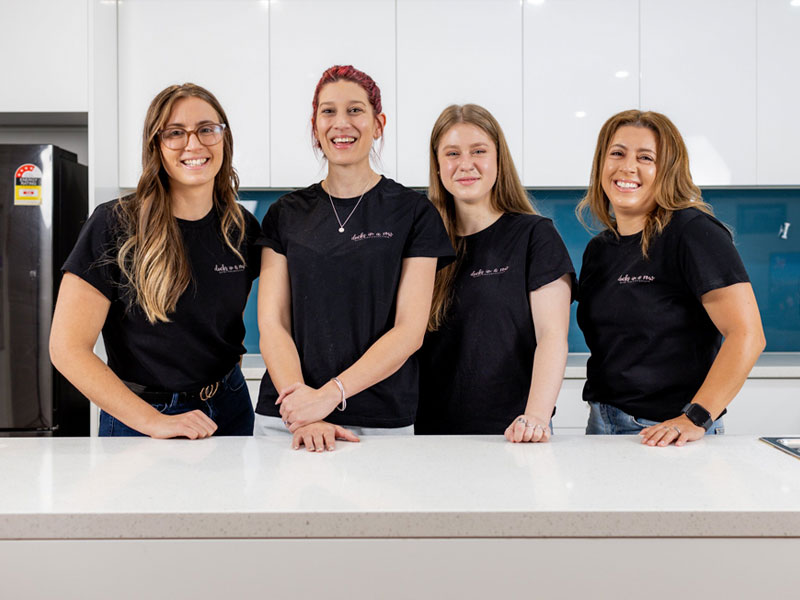A home filled with decades of belongings tells a story — family milestones, hobbies, keepsakes, and memories all have their place. But as we age, the belongings we’ve accumulated can start to feel more overwhelming than comforting. Decluttering for seniors is about more than tidying up; it’s about creating comfort, safety, and peace of mind. Too much clutter doesn’t just take up space — it can make a home harder to clean, cause stress, and even create safety risks.
For seniors, decluttering is not about “getting rid of everything.” Instead, it’s about creating a safe, functional, and peaceful space that supports independence, daily routines, and wellbeing. With the right approach, decluttering can be gentle, thoughtful, and empowering.

Why Decluttering Matters for Seniors
Decluttering is often thought of as a cosmetic change — something that simply makes a house look neat. But for seniors, it plays a much deeper role in improving quality of life.
- Safety First: Clutter on floors, in walkways, or stacked on tables can increase the risk of trips and falls. Removing these hazards makes everyday living safer.
- Reduced Stress and Anxiety: A cluttered environment can feel mentally overwhelming. A simplified space promotes calm and reduces decision fatigue.
- More Independence: With belongings pared down and organised, seniors can find what they need more easily without relying on others for help.
- Easier Housekeeping: Less clutter means less dust, less cleaning, and less physical strain for everyday tidying.
- Room for What Matters: By keeping only what is loved and useful, seniors can better enjoy their favourite hobbies, display their treasures, and live more comfortably.
Safe and Simple Steps for Senior-Friendly Decluttering
1. Start Small and Go Slow
Decluttering a whole house may feel impossible. Instead of attempting it all at once, break it into tiny, manageable projects.

- Begin with a single drawer, a bedside table, or one kitchen shelf.
- Limit sessions to 15–30 minutes to avoid exhaustion.
- If mobility is a challenge, focus on areas within easy reach first.
Example: Instead of tackling the whole wardrobe, start with just shoes. Once that’s complete, move on to scarves or jackets. This step-by-step approach builds momentum without overwhelm.
2. Prioritise Safety First
Safety should guide every decision. Ask: Does this item make my home safer or more hazardous?
- Clear walkways in hallways, living rooms, and entryways.
- Remove small rugs that slip or curl up at the corners.
- Tidy cords and cables with clips or covers.
- Move frequently used items (like dishes, medications, or cleaning products) to waist-height shelves to avoid bending or reaching.
Example: A senior who makes tea daily should store the kettle, cups, and tea bags all within arm’s reach. No more climbing on stools or stooping to the back of a low cupboard.
3. Keep What’s Useful and Meaningful
Decluttering doesn’t mean letting go of every memento. The goal is to strike a balance between practicality and sentiment.

- Keep daily essentials close and easy to access.
- Highlight sentimental items — display family photos on a shelf rather than storing them in boxes.
- Let go of duplicate or broken items that no longer serve a purpose.
Example: Instead of holding onto 15 vases, choose two or three favourites and donate the rest.
4. Use the “One Decision at a Time” Rule
Decision-making is often the hardest part. Simplify it by asking gentle guiding questions:
- Do I use this often?
- Does it make my daily life easier or happier?
- Would someone else get more use from this than I do?
Breaking it down item by item avoids the overwhelm of looking at a whole room.
Example: While going through a kitchen drawer, focus only on utensils. Keep the ones used daily (like a favourite spatula) and donate duplicates.
5. Choose Senior-Friendly Storage Solutions
The right storage makes organisation easier to maintain. Seniors benefit from simple, lightweight, and accessible options.
- Clear bins so contents can be seen without opening.
- Baskets with easy-to-grab handles.
- Large-print or colour-coded labels for quick identification.
- Rolling trolleys or carts to keep essentials mobile.
Example: A rolling cart in the living room could hold glasses, remote controls, a puzzle book, and tissues — all within easy reach.
6. Tackle Sentimental Items with Care
This is often the most emotional step, so it should be handled with patience.
- Take time to reminisce as you sort through items.
- Share stories with children or grandchildren about treasured belongings.
- Create a memory box with small keepsakes that hold deep meaning.
- Take photos of items you don’t need to physically keep but want to remember.
Example: If a senior has dozens of holiday decorations but uses only a handful, they could take photos of the rest and gift them to family members who will enjoy them.
7. Declutter Paperwork and Documents
Paper clutter can be overwhelming and confusing. Sorting and simplifying important documents helps reduce stress and prevents misplacement.
- Keep only vital documents like medical records, legal papers, and insurance information.
- Shred old bills, expired warranties, and outdated policies.
- Use a simple filing system with clear categories such as Medical, Financial, and Household.
Example: A large accordion file with bold labels makes it easy to find important documents in an emergency.
8. Involve Family or Support

Decluttering can be emotional and physically tiring. Involving loved ones or carers makes the process smoother.
- Family members can help lift heavy boxes and offer encouragement.
- Decluttering together allows for shared storytelling and memory sharing.
- Professional carers can help sort items with patience and sensitivity.
Example: A daughter might sit with her mother to look through old jewellery, keeping favourites while passing others down to grandchildren.
9. Donate, Gift, or Repurpose Items
Letting go becomes easier when you know belongings will be appreciated elsewhere.

- Donate gently used clothes, books, and furniture to charity.
- Gift family heirlooms to loved ones now, rather than later.
- Repurpose items — for instance, turn old t-shirts into a memory quilt.
Example: A senior downsizing from a family home could gift a dining table to their children, ensuring it stays in the family.
10. Know When to Call a Professional Organiser
Sometimes, decluttering alone feels too overwhelming. That’s where a professional organiser can help.
They bring:
- Clarity — breaking large projects into manageable steps.
- Support — guiding tough decisions with compassion.
- Efficiency — completing in hours what might take weeks.
- Sustainable systems — easy-to-maintain storage tailored to senior needs.
- Peace of mind — reducing stress and creating a home that feels safe and comfortable.
Extra Tips for Easier Decluttering
- Work during the day when energy is highest.
- Keep water and snacks nearby during decluttering sessions.
- Take frequent breaks — progress is progress, no matter how small.
- Make it social — invite family or friends to share stories and memories while you sort.
Final Thoughts
Decluttering for seniors is not just about tidiness — it’s about safety, independence, and peace of mind. By starting small, focusing on safety, and honouring sentimental items, seniors can transform their homes into places of comfort and calm.
Remember: this process doesn’t have to be rushed or overwhelming. It can be done step by step, with support from loved ones or a professional organiser. The result is a space that feels safer, easier to manage, and more enjoyable to live in.
👉 Ready to make life simpler and safer? Book your free consultation with Ducks in a Row Home Organisation today and let’s create a clutter-free home that celebrates memories while supporting everyday living.


